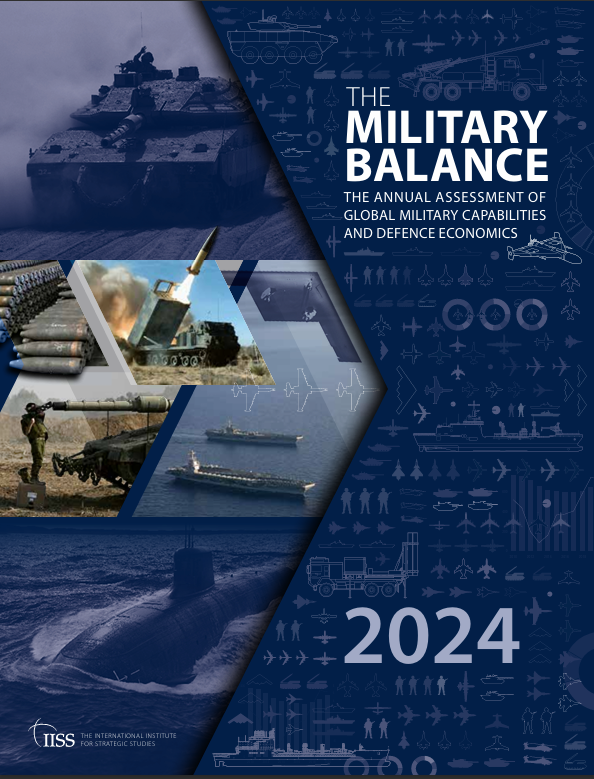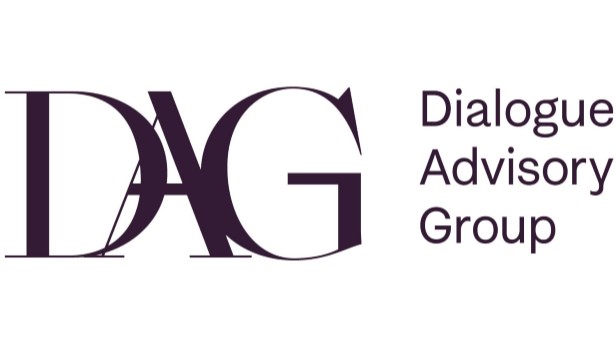The 2024 edition, as usual, assesses armed forces and equipment inventories in 170+ countries, along with defense economics. It explores key issues such as Russia’s invasion of Ukraine, Chinese military activities in Taiwan, and UAV exports. The report includes graphics on defense personnel, equipment, and procurement trends and highlights Euro-Atlantic critical national infrastructure issues. The Military Balance 2024
Overview
Chapter 1 Defence and Military Analysis
Discusses the escalating global tension due to significant events, such as the Israel-Hamas conflict, Indo-Pacific and Arctic tensions, and Russia’s ongoing war in Ukraine. As a result, it warns of a potentially dangerous coming decade due to an emerging ‘might is right’ approach. Moreover, it takes note of various countries’ responses, such as Japan’s and South Korea’s strengthening defense ties, the Philippines’ renewed military cooperation with the US, and Australia’s naval expansion via the AUKUS pact.
The text discusses China’s assertive actions, including surveillance near US shores and aggressive diplomacy. It highlights NATO’s revitalization, Germany’s new security strategy, and updates to the UK’s Defence Command Paper due to concerns over China’s military growth. It also evaluates military forces across 170 countries, the rising demand for UAVs, trench warfare resurgence in Ukraine, and strategic government responses to security challenges.
Chapter 2 North America
Focuses on North America’s defense and military capabilities, specifically the United States, Canada, and Mexico. It provides detailed information on each country’s force structures, active personnel numbers, equipment inventories, and defense budgets. It discusses their key defense priorities, modernization efforts, and strategic challenges. It also highlights the region’s defense-industrial capabilities, procurement trends, and international defense cooperation initiatives. In addition, it examines regional security dynamics, military exercises, and ongoing operations impacting the defense posture of these countries.
- The Pentagon plans to develop the B61-13, a new nuclear bomb with a higher yield than the B61-12.
- Canadian Prime Minister Justin Trudeau announced Canada’s increased military participation in a NATO battlegroup in Latvia.
- A US Air Force F-22 Raptor intercepted a Chinese reconnaissance balloon in Canadian and US airspace, straining US-China relations.
- Canada is purchasing 88 F-35A Lightning II aircraft to replace its CF-18 Hornets, with delivery starting in 2026.
- The USS Gerald R. Ford, a Ford-class aircraft carrier, started its operational deployment in May and responded to a Hamas attack in October.
- The US Army is revising its recruitment approach to address personnel shortages.
Chapter 3 Europe
Analyses European defence and military developments, notably covering both NATO and non-NATO states. Initially, it discusses their defense postures, force structures, equipment holdings, and budgets. It also examines key security challenges like Russia’s military activities, hybrid threats, and cybersecurity concerns. Particularly, the analysis delves into NATO’s deterrence and defense posture, including the deployment of multinational battlegroups in Eastern Europe. Furthermore, it highlights defense modernization efforts, procurement trends, and European industrial capabilities. Finally, it explores military exercises, cooperation initiatives, and regional defense cooperation frameworks.
- Finland became the 31st NATO member, increasing the Alliance’s military capability. Sweden’s application for membership is still under review.
- The European Sky Shield Initiative, led by Germany to enhance air and missile defense, gained momentum with participation from over a dozen countries.
- More European NATO members are meeting the 2% GDP defense spending target.
- Europe’s defense industry increased ammunition, missile, and other equipment production to meet demands from Ukraine and local needs.
- The EU proposed an initiative to provide Ukraine with artillery ammunition and increase production capacities, but the delivery commitment was off track.
- Infrastructure vulnerabilities in Europe increased in 2023, with reports of deliberate damage to undersea gas pipelines and telecommunications cables.
Chapter 4 Russia and Eurasia
Studies defense and military developments in Russia, Central Asia, and the Caucasus. It concerns these nations’ defense postures, force structures, equipment holdings, and defense budgets. The focus is on Russia’s military modernization efforts, strategic priorities, and defense-industrial capabilities. Security challenges in the region are also analyzed, including Russia’s military activities, border disputes, and regional conflicts. The section highlights military exercises, defense cooperation initiatives, and arms exports in Russia and Eurasia. Furthermore, it discusses the influence of geopolitical dynamics on the region’s defense policies and military capabilities.
- Ukraine reclaimed some territory from Russia but failed to break through Russia’s heavily fortified lines in 2023.
- Ukraine launched deep strikes using UAVs against Moscow and logistical targets.
- The Wagner Group’s mutiny posed a significant threat to Putin’s regime, with their advance towards Moscow leading to a diplomatic solution involving Belarus.
- Azerbaijan claimed the remaining Nagorno-Karabakh region, causing a refugee surge. Russian peacekeepers were killed, but Russia did not intervene.
- Border tensions led Kyrgyzstan and Tajikistan to invest significantly in UAVs, with disputes turning violent.
- Russia’s Black Sea fleet suffered setbacks in the war against Ukraine, including damage to a landing ship and submarine.
- To support the war against Ukraine, Russia procured UAVs and munitions from Iran and artillery ammunition from North Korea.
Chapter 5 Asia
Focuses on Asia and provides a comprehensive analysis of defense and military developments in the region. It covers many Asian countries, including major powers like China, India, Japan, and other regional actors. The chapter discusses defense postures, force structures, equipment inventories, and defense budgets of Asian countries. It examines key security challenges in the region, such as territorial disputes, military modernization, and regional power dynamics. It highlights defense-industrial capabilities, procurement trends, and technological advancements in Asian defense sectors. Additionally, it delves into military exercises, security cooperation initiatives, and defense partnerships among Asian nations.
- China reshuffles military personnel, replacing defense minister Li Shangfu amid anti-corruption investigations.
- Australia agrees to its largest defense investment, purchasing nuclear-powered, conventionally armed submarines.
- Taiwan has increased its defense budget by 21% due to heightened tensions with China.
- China is progressing on its new aircraft carrier, the Fujian (Type-003), which will feature catapults for more potent air operations.
- India focuses military spending on boosting its domestic industry, allocating 75% of procurement spending to local sources.
- North Korea tests a solid-fuel ICBM and unveils a submarine capable of firing nuclear-armed missiles.
Chapter 6 Middle East and North Africa
Provides a detailed analysis of defense and military developments in the Middle East and North Africa. Firstly, it discusses the defense postures, force structures, equipment holdings, and budgets of various countries in these regions. Secondly, it examines key security challenges such as regional conflicts, terrorism, and geopolitical rivalries. The document also delves into military modernization efforts, procurement trends, and defense-industrial capabilities. It highlights military exercises, security cooperation initiatives, and regional defence partnerships. Lastly, it explores the impact of external actors and international interventions on defense policies and military capabilities.
- Hamas attacked Israel from Gaza on October 7, 2023, causing approximately 1,200 deaths and taking hostages, leading to war.
- Israel retaliated with bombings, artillery fire, and a ground invasion of Gaza.
- Saudi Arabia and Iran restored diplomatic ties through a Chinese-mediated deal.
- US plans to reduce Middle East military presence were hindered by Iranian naval harassment, Russian involvement in Syria, and the Israel-Hamas war, leading to increased US military deployments.
- Following a 12-year suspension due to the civil war, Syria was reinstated in the Arab League.
- Algeria nearly doubled its defense spending in 2022 due to equipment modernization.
- Despite the war, Israel’s defense exports hit a record high in 2022, including Germany’s purchase of Arrow 3 missile-defense systems.
Chapter 7 Latin America and the Caribbean
Delves into defense and military developments in Latin America and the Caribbean. It unravels various aspects of different countries within these regions, such as their defense stances, force structures, equipment inventory, and budgets. In addition, it examines key security challenges, including border disputes, internal conflicts, and transnational organized crime. The report scrutinizes these countries’ military modernization efforts, procurement trends, and defense-industrial capabilities. It also sheds light on military exercises, security cooperation initiatives, and regional defense partnerships. Moreover, the report discusses the impact of external actors and international organizations on Latin American and Caribbean countries’ defense policies and military capabilities.
- Venezuela faced criticism from Brazil and the U.S. for indicating interest in controlling Guyana’s Essequibo region, leading to U.S. flight operations in Guyana in 2023.
- Mexico’s Supreme Court blocked President López Obrador’s attempt to transfer National Guard responsibility to the military.
- Brazil’s President Lula da Silva announced the ‘Novo PAC’ plan, proposing up to BRL1.7 trillion (USD340.5 billion) spending across sectors, including BRL52.8bn (USD10.6bn) for defense.
- Due to economic difficulties, Argentina’s defense spending decreased, halting new combat aircraft purchases.
- Israel suspended defense sales to Colombia following criticism over the Hamas-Israel war.
- Chile plans to commission a new icebreaker, the Almirante Viel, in 2024, as part of a broader naval vessel construction boom in Latin America.
Chapter 8 Sub-Saharan Africa
Analyzes Sub-Saharan Africa’s military, detailing active/reserve forces, equipment, and deployment strategies. Highlights special units like reconnaissance and air defense. Also covers defense-industry bases, cooperation agreements, and relations with other armies. The region’s defense industry, limited to equipment maintenance, small arms, and ammunition production, faces economic challenges despite investment in equipment, counter-insurgency, and regional deployments. The region’s economic fragility is underscored by slow growth, high debt, and dependence on imports from Russia and Ukraine. Energy supply disruptions escalating fuel prices and a tripled public debt since 2010 have sparked inflation, cost increases, lowered living standards, and debt crisis fears. Double-digit inflation plagues 16 countries.
- Niger experienced a coup in July, shocking Western allies, France and US. Post-coup, the US resumed its suspended counter-terrorist drone operations in Niger.
- Due to ongoing unrest, Ethiopia tripled its defense budget to ETB84bn (USD1.50bn) in 2023. Amid escalating tensions, local forces in Ethiopia’s Amhara region prepared for a confrontation with the national defense force.
- Mali requested, and the UN agreed, to end its decade-long operations in the country.
- Angola’s defense spending decreased due to currency depreciation and recession, making its budget lower than Nigeria’s.
- Turkey and the United Arab Emirates secured defense export deals with several African countries, capitalizing on Russia’s focus on domestic needs.
- Gabon experienced a coup in August due to a disputed election, extending the Bongo family’s rule.



